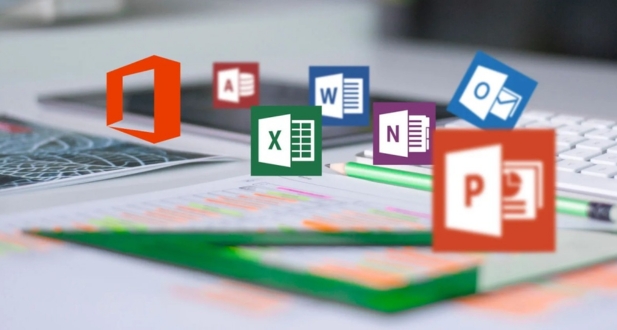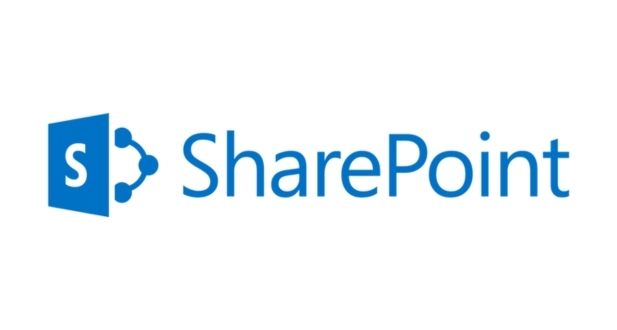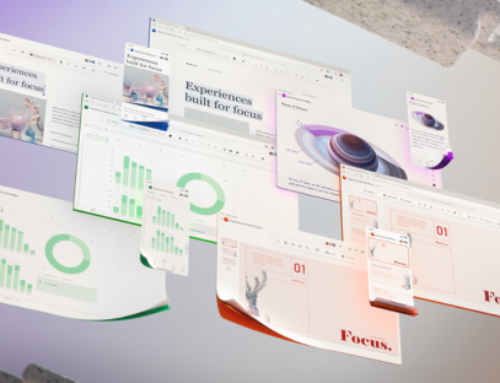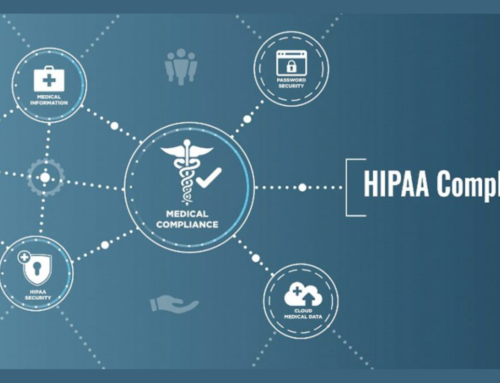Introduction to Cyber Threats in Microsoft 365
In the rapidly evolving digital landscape, the prevalence of cyber threats poses a significant challenge to the security of organizations utilizing Microsoft 365. This section provides a comprehensive overview of the nature of cyber threats, emphasizing the escalating cybersecurity challenges faced by businesses today.
Definition of Cyber Threats
Understanding cyber threats is fundamental to fortifying defenses in the digital realm. Cyber threats encompass a broad spectrum of malicious activities designed to compromise the confidentiality, integrity, or availability of digital information. These threats can manifest as phishing attacks, malware, ransomware, and various forms of unauthorized access.
Overview of Increasing Cybersecurity Challenges
As technology advances, so do the tactics employed by cybercriminals. The digital transformation that organizations undergo, especially in the context of Microsoft 365, brings forth an array of cybersecurity challenges. These challenges include sophisticated social engineering techniques, evolving malware strains, and the relentless pursuit of exploiting vulnerabilities.
Microsoft 365, as a widely adopted cloud-based platform, becomes a prime target for cyber adversaries seeking to exploit potential weaknesses. The interconnected nature of modern workplaces, facilitated by Microsoft 365’s collaborative features, further amplifies the surface area for cyber threats.
Understanding Microsoft 365 Security Features
As organizations navigate the complex landscape of cyber threats, Microsoft 365 emerges as a robust ally in the fight against digital adversaries. This section provides a detailed exploration of the built-in security measures within Microsoft 365, leveraging its sophisticated Threat Intelligence capabilities and Advanced Threat Protection (ATP) features.
Overview of Built-in Security Measures in Microsoft 365
Microsoft 365 is not merely a suite of productivity tools; it’s a fortified ecosystem designed to prioritize security from its core. This segment delves into the inherent security measures seamlessly integrated into Microsoft 365. From identity and access management to secure collaboration, the platform establishes a solid foundation for safeguarding digital assets.
Threat Intelligence Capabilities
At the heart of Microsoft 365’s defense mechanism lies its robust Threat Intelligence capabilities. This includes a dynamic set of tools and services that analyze vast amounts of data to identify, assess, and mitigate potential cyber threats. Threat Intelligence in Microsoft 365 goes beyond traditional security measures, providing proactive insights into emerging threats and vulnerabilities.
Advanced Threat Protection (ATP) Features
Microsoft 365’s Advanced Threat Protection (ATP) represents the frontline defense against sophisticated cyber threats. This segment explores the various features encompassed within ATP, including advanced email security, real-time threat detection, and targeted attack protection. ATP’s multi-layered approach adds an extra tier of security, ensuring a proactive stance against evolving cyber threats.
Common Cyber Threats Targeting Microsoft 365

In the dynamic digital environment, Microsoft 365 is not immune to a myriad of cyber threats that continually evolve in sophistication. This section scrutinizes prevalent cyber threats, shedding light on the specific challenges organizations face within the Microsoft 365 ecosystem.
Phishing Attacks and Social Engineering
Phishing attacks stand as one of the most pervasive and insidious threats targeting Microsoft 365 users. This subsection dissects the mechanisms of phishing, emphasizing how cybercriminals employ deceptive emails and fraudulent communication to manipulate users into divulging sensitive information. Social engineering techniques play a crucial role in these attacks, exploiting human psychology to breach the digital defenses of organizations utilizing Microsoft 365.
Malware and Ransomware Threats
The specter of malware and ransomware looms large in the Microsoft 365 landscape. This segment explores the varied forms of malicious software that can infiltrate the platform, jeopardizing data integrity and system functionality. Ransomware, in particular, poses a severe threat, encrypting critical files and demanding payment for their release. Understanding the modus operandi of these threats is paramount in devising effective countermeasures.
Account Compromise and Unauthorized Access
A compromised account is akin to a gateway for cyber adversaries. This subsection delineates the risks associated with account compromise in Microsoft 365, whether through weak credentials, brute force attacks, or other vulnerabilities. Unauthorized access to sensitive data follows, highlighting the urgency for robust identity and access management strategies within the Microsoft 365 environment.
Advanced Threat Protection in Microsoft 365

Microsoft 365’s Advanced Threat Protection (ATP) stands as a robust line of defense against sophisticated cyber threats. This section delves into the intricacies of Microsoft 365 ATP, exploring its capabilities, email security enhancements, and features like Safe Links and Safe Attachments.
In-Depth Exploration of Microsoft 365 ATP
Microsoft 365 ATP represents a comprehensive suite of advanced security measures designed to fortify the platform against evolving cyber threats. This subsection provides a detailed exploration of the various components within ATP, including threat intelligence integration, behavioral analytics, and real-time threat detection. Understanding the depth and breadth of Microsoft 365 ATP is crucial for organizations aiming to bolster their security posture.
Email Security Enhancements
Email remains a primary vector for cyber attacks, making robust email security paramount. This segment elucidates the enhancements brought about by Microsoft 365 ATP in the realm of email security. From advanced anti-phishing measures to real-time scanning for malicious content, Microsoft 365 ATP elevates email security to mitigate the risks associated with deceptive and malicious emails.
Safe Links and Safe Attachments Features
Safe Links and Safe Attachments are integral components of Microsoft 365 ATP, acting as proactive guards against malicious links and attachments. This subsection provides an insightful examination of how these features work cohesively to prevent users from interacting with harmful content. Safe Links protect against malicious URLs, while Safe Attachments scrutinize email attachments for potential threats before they reach the user’s inbox.
Security Measures for SharePoint and OneDrive

Microsoft 365 extends its robust security framework to safeguard the collaborative environments of SharePoint and OneDrive. This section explores the nuanced security measures in place, addressing threat protection for SharePoint Online, file and content security within OneDrive, and overarching collaboration security features.
Threat Protection for SharePoint Online
SharePoint Online, as a central hub for document collaboration, requires meticulous threat protection. This sub-section delves into the security protocols implemented to shield SharePoint Online from a spectrum of cyber threats. From real-time scanning for malicious files to access controls and permissions management, the focus is on fortifying the collaborative environment against potential vulnerabilities.
File and Content Security in OneDrive
OneDrive, as a repository for individual files and documents, demands a tailored approach to file and content security. This segment outlines the multifaceted security measures embedded within OneDrive, encompassing encryption protocols, versioning controls, and advanced access permissions. Understanding how OneDrive ensures the integrity and confidentiality of stored files is crucial for users seeking a secure and private digital workspace.
Collaboration Security Features
Collaboration lies at the core of SharePoint and OneDrive, making collaboration security features paramount. This subsection elucidates the security mechanisms in place to facilitate secure collaboration. From secure sharing options to activity monitoring and audit trails, Microsoft 365 ensures that collaborative efforts are not only efficient but also safeguarded against unauthorized access and potential data leaks.
Endpoint Security and Microsoft Defender
Endpoint security is a critical aspect of overall cybersecurity, and Microsoft 365 integrates a formidable solution in the form of Microsoft Defender for Endpoint. This section provides an extensive exploration of endpoint security measures, the seamless integration with Microsoft Defender, and the capabilities for real-time threat detection and response.
Overview of Endpoint Security Measures
Endpoint security refers to the protection of individual devices (endpoints) within a network. This sub-section delves into the comprehensive measures in place to secure endpoints within the Microsoft 365 ecosystem. From antivirus capabilities to device encryption and application controls, the focus is on fortifying each endpoint against potential security threats, ensuring a robust defense against attacks targeting individual devices.
Integration with Microsoft Defender for Endpoint
Microsoft Defender for Endpoint stands as a cornerstone in Microsoft’s cybersecurity arsenal. This segment provides insights into the seamless integration of endpoint security measures with Microsoft Defender. The collaboration ensures a unified defense strategy, where endpoint security synergizes with the broader capabilities of Microsoft Defender, creating a cohesive and comprehensive security posture.
Real-time Threat Detection and Response
In the dynamic landscape of cybersecurity, real-time threat detection and response are imperative. This subsection explores how Microsoft Defender for Endpoint employs advanced threat intelligence, behavioral analysis, and machine learning to identify and respond to potential threats in real time. The emphasis is on the proactive nature of the solution, ensuring that any emerging threat is swiftly detected and mitigated.
User Education and Best Practices
In the realm of cybersecurity, the human element plays a pivotal role, and this section focuses on the significance of user education, best practices for mitigating cyber threats, and the promotion of security consciousness among users.
Importance of User Training in Cybersecurity
User education is a linchpin in the defense against cyber threats. This subsection elucidates the critical role of user training in creating a human firewall. By imparting knowledge on identifying phishing attempts, recognizing social engineering tactics, and adhering to security protocols, organizations empower their users to be proactive defenders against potential cyber attacks.
Best Practices for Mitigating Cyber Threats
Mitigating cyber threats requires a concerted effort from every individual within an organization. This segment outlines best practices that users can adopt to enhance cybersecurity. From employing strong and unique passwords to staying vigilant against suspicious emails and keeping software up-to-date, these practices form the foundation for a collective defense mechanism against a diverse array of cyber threats.
Encouraging Security Consciousness Among Users
Beyond training and best practices, fostering a culture of security consciousness is paramount. This subsection explores strategies to instill a sense of responsibility and awareness among users. From regular security reminders to creating a positive and open environment for reporting security concerns, organizations can encourage users to view cybersecurity as a shared responsibility.
Monitoring and Incident Response
The proactive monitoring of security events, robust incident response protocols, and the strategic use of security analytics form the crux of this section. It provides insights into how organizations can effectively monitor their Microsoft 365 environment, respond to security incidents, and leverage analytics for a swift and informed response.
Security Monitoring in Microsoft 365
Security monitoring is a continuous process that allows organizations to stay vigilant against potential threats. This subsection explores the various tools and features within Microsoft 365 that enable comprehensive security monitoring. From auditing user activities to tracking login attempts and identifying suspicious behavior, organizations can establish a proactive stance in identifying and mitigating security risks.
Incident Response Protocols
Incident response is a critical aspect of cybersecurity, ensuring that organizations can effectively contain and remediate security incidents. This segment outlines the development of incident response protocols tailored to the Microsoft 365 environment. It covers the steps organizations should take when a security incident occurs, including communication strategies, isolation procedures, and post-incident analysis.
Utilizing Security Analytics for Quick Response
Security analytics empowers organizations to glean actionable insights from vast amounts of data, enabling a quick and informed response to security incidents. This subsection highlights the role of analytics in identifying patterns, anomalies, and potential threats. By leveraging security analytics tools within Microsoft 365, organizations can enhance their ability to detect and respond to security incidents in real time.
Compliance and Data Protection
In the ever-evolving landscape of data protection and privacy, ensuring regulatory compliance within Microsoft 365 is paramount. This section navigates through the strategies for regulatory compliance, the implementation of Data Loss Prevention (DLP) measures, and the utilization of privacy and compliance features inherent in Microsoft 365.
Ensuring Regulatory Compliance in Microsoft 365
Regulatory compliance is a cornerstone in safeguarding sensitive data. This subsection explores how Microsoft 365 provides tools and features to facilitate compliance with various regulations. From GDPR to HIPAA, organizations can tailor their Microsoft 365 environment to meet specific compliance requirements. This includes features like audit trails, access controls, and encryption protocols that contribute to maintaining a compliant digital ecosystem.
Data Loss Prevention (DLP) Strategies
Preventing the inadvertent or malicious leakage of sensitive data is a critical aspect of data protection. This segment delves into the implementation of DLP strategies within Microsoft 365. Organizations can define policies that automatically detect and prevent the transmission of sensitive information, ensuring that data remains within the boundaries of compliance and regulatory frameworks.
Privacy and Compliance Features
Microsoft 365 comes equipped with an array of built-in privacy and compliance features. This sub-section outlines these features, including advanced threat protection, information governance, and communication compliance. By leveraging these tools, organizations can establish a comprehensive framework that addresses both privacy concerns and compliance requirements.
Enhancing Microsoft 365: Strategies for Integration, Accessibility, Cost Efficiency, and User Adoption
In the dynamic landscape of Microsoft 365, optimizing its potential goes beyond its inherent capabilities. This section unfolds practical strategies for organizations to enhance their Microsoft 365 experience, covering third-party integrations, accessibility, cost efficiency, and user adoption.
Integration with Third-Party Tools for Enhanced Functionality
Microsoft 365’s versatility extends beyond its native applications. Organizations can unlock a new realm of possibilities by integrating third-party tools and services. This section explores the opportunities and benefits of seamless integration. From project management solutions to customer relationship management (CRM) systems, the ability to streamline workflows and enhance functionality becomes unparalleled.
Ensuring Accessibility and Inclusivity in Microsoft 365
Accessibility is a cornerstone of a modern workplace. Here, we delve into Microsoft 365’s commitment to inclusivity. From built-in screen readers to adherence to inclusive design principles, Microsoft 365 ensures a digital workspace that caters to users with diverse abilities. This section emphasizes creating an environment where every user can collaborate effectively.
Optimizing Costs and Licensing Strategies in Microsoft 365
Effectively managing costs and licensing is pivotal for organizations leveraging Microsoft 365. This segment provides actionable insights into cost optimization by understanding licensing options, ensuring compliance, and making informed decisions on subscription models. It guides businesses in aligning Microsoft 365 usage with budgetary considerations, thereby maximizing the value derived from the suite.
Microsoft 365 Training and Certification Programs
Continuous learning is the cornerstone of unlocking the full potential of Microsoft 365. This section introduces readers to Microsoft’s official training and certification programs. From fundamental certifications for administrators to specialized tracks for developers and security professionals, organizations can strategically invest in upskilling their teams. This investment ensures that teams navigate the complexities of Microsoft 365 confidently.
User Adoption Strategies for Successful Implementation
Implementing Microsoft 365 is not merely a technical transition; it’s a cultural shift. This segment explores effective user adoption strategies, emphasizing communication plans, hands-on training sessions, and feedback mechanisms. Successful implementation hinges on ensuring that users embrace the new tools and features, making them integral to the organization’s workflow.
By delving into these strategies, organizations can not only harness the power of Microsoft 365 but also tailor its capabilities to their unique needs, ensuring a comprehensive and successful integration into their digital ecosystems.
Future Trends in Microsoft 365 Security
As technology advances, so too do the challenges and opportunities in the realm of cybersecurity. This section explores the future trends in Microsoft 365 security, delving into emerging technologies that will shape the landscape and predictions for the evolution of security features within the platform.
Emerging Technologies in Cybersecurity
The future of Microsoft 365 security is intertwined with emerging technologies that redefine the cybersecurity landscape. This sub-section provides insights into technologies such as Artificial Intelligence (AI), Machine Learning (ML), and Quantum Computing, and their potential impact on enhancing security measures. From predictive threat analysis to advanced encryption methods, these technologies hold the promise of fortifying Microsoft 365 against evolving cyber threats.
Predictions for Evolving Microsoft 365 Security Features
Anticipating the future of Microsoft 365 security involves predicting how the platform will adapt to meet the challenges posed by increasingly sophisticated cyber threats. This segment explores predictions for the evolution of security features within Microsoft 365. From enhanced threat detection algorithms to more intuitive user authentication methods, these predictions provide a glimpse into the future of security measures integrated into the platform.
Conclusion: Empowering Cyber Resilience
In the dynamic and ever-evolving landscape of cybersecurity, the journey through Microsoft 365 has been a comprehensive exploration of strategies and tools to fortify organizations against an array of digital threats. As we conclude this guide, it’s imperative to underscore the essence of empowering cyber resilience within the Microsoft 365 ecosystem.
Embracing a Holistic Approach (Approx. 100 words)
Cyber resilience is not merely about deploying sophisticated tools; it’s a mindset that permeates every aspect of an organization. From user education to robust monitoring, incident response to compliance adherence, each element plays a pivotal role in establishing a holistic approach to cybersecurity within Microsoft 365.
Harnessing the Power of Microsoft 365
Microsoft 365, with its intricate web of security features, compliance tools, and collaborative platforms, stands as a formidable ally in the battle against cyber threats. This guide has delved into the depths of Microsoft 365, unraveling its capabilities and providing insights on leveraging its power to enhance cybersecurity measures.
Continuous Adaptation and Vigilance
As the cybersecurity landscape evolves, organizations must adopt a mindset of continuous adaptation and vigilance. Cyber resilience is not a static achievement but an ongoing commitment to staying ahead of emerging threats, embracing new technologies, and fostering a culture where every user is a vigilant defender.
In conclusion, the empowerment of cyber resilience within Microsoft 365 is a multifaceted endeavor. It requires a collaborative effort, a commitment to education, and the strategic use of the myriad tools at our disposal. By embracing these principles, organizations can navigate the digital landscape with confidence, knowing they are equipped to withstand and respond effectively to the challenges that may arise.
Microsoft 365 customization involves tailoring the suite of productivity tools to meet specific business needs. This customization is essential as it allows organizations to optimize workflows, enhance collaboration, and address unique requirements, ultimately increasing efficiency and productivity.
Microsoft 365 employs robust security features, including encryption, access controls, and threat detection, to secure sensitive data. It adheres to various compliance standards such as GDPR, HIPAA, and ISO 27001, ensuring that organizations can meet regulatory requirements and maintain data privacy.
Microsoft 365 comprises essential applications like Word, Excel, PowerPoint, Teams, and more. These components integrate seamlessly, allowing users to create, communicate, and collaborate in real-time. Teams, for example, facilitate communication and collaboration, while applications like Word and Excel enable content creation and data analysis.
A: Microsoft 365 employs advanced endpoint security measures to protect individual devices within a network. Microsoft Defender for Endpoint is a comprehensive security solution that integrates with Microsoft 365, providing real-time threat detection and response capabilities to safeguard against evolving cyber threats.
User education is crucial in building a strong defense against cyber threats. Users should be trained to recognize phishing attempts, follow best practices like using strong passwords, and stay vigilant against suspicious activities. Regular security reminders and creating a culture of security consciousness contribute to a more resilient Microsoft 365 environment.








